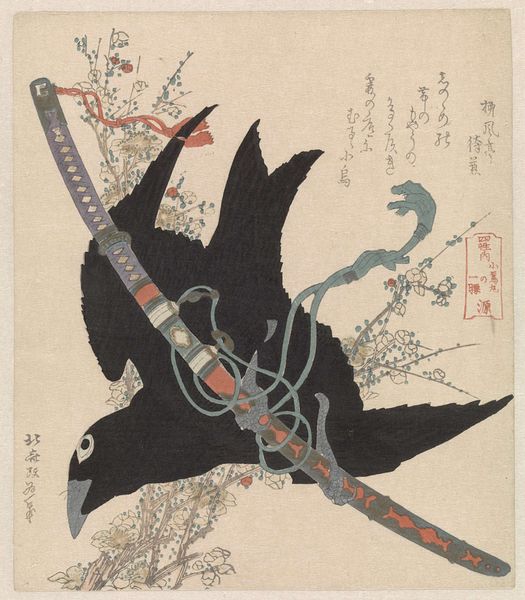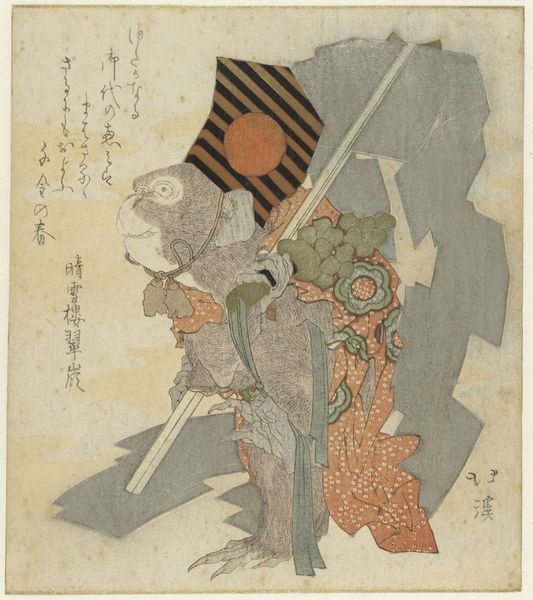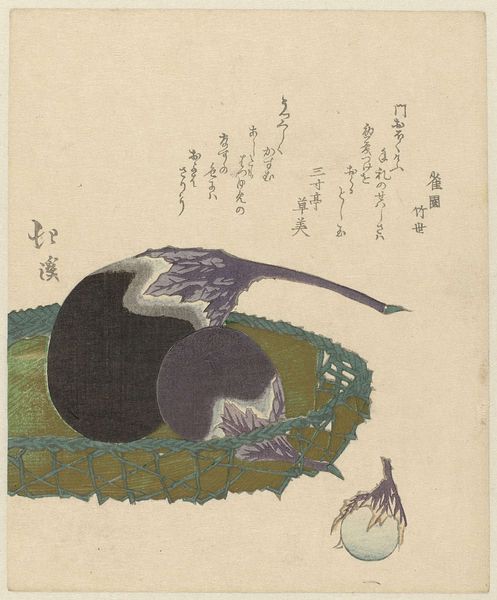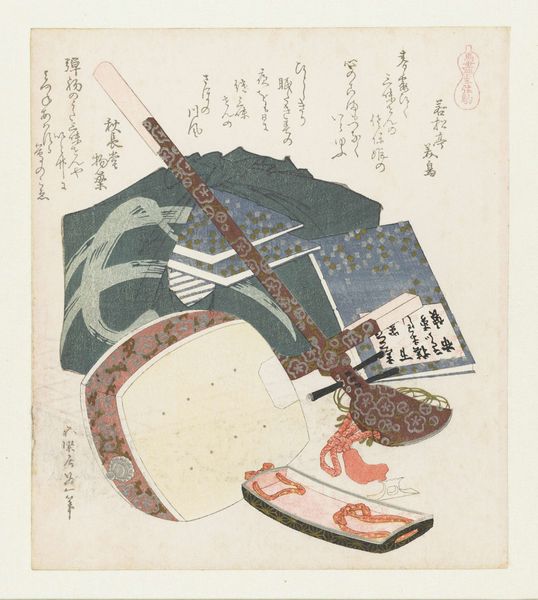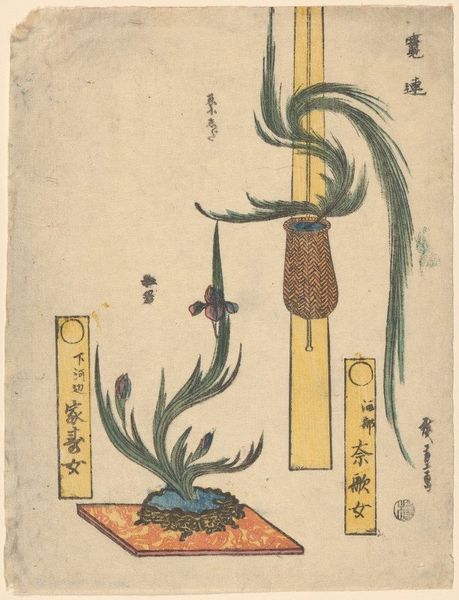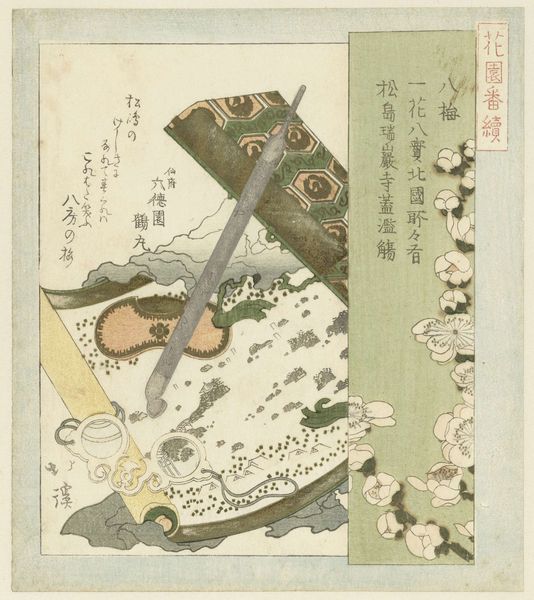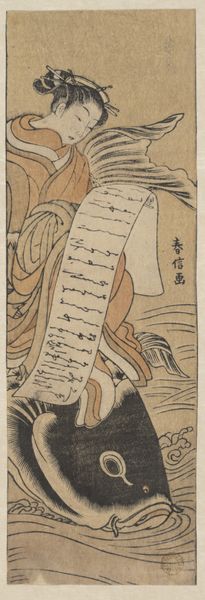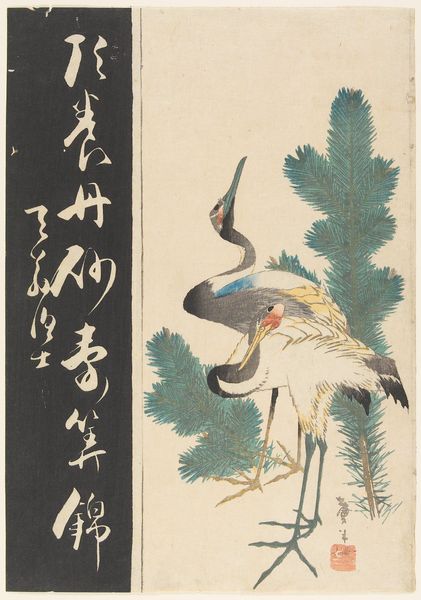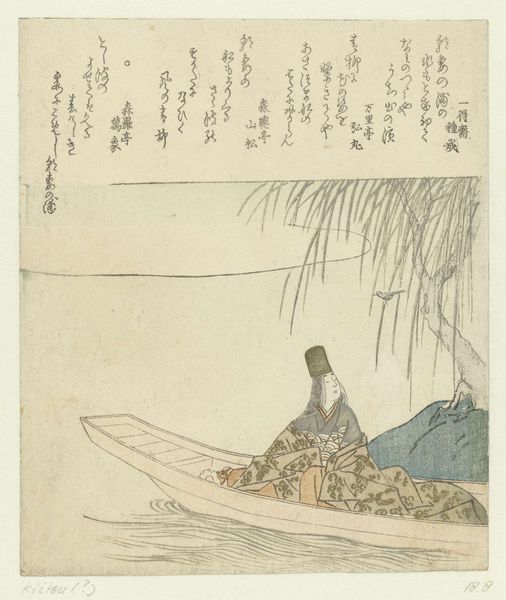
#
toned paper
#
childish illustration
#
personal sketchbook
#
coloured pencil
#
sketchbook drawing
#
watercolour bleed
#
watercolour illustration
#
cartoon carciture
#
sketchbook art
#
watercolor
Dimensions: height 210 mm, width 185 mm
Copyright: Rijks Museum: Open Domain
Totoya Hokkei's ‘Fazant’ is a woodblock print made sometime between 1820 and 1840. Hokkei was a Japanese artist of the late Edo period, a time marked by social hierarchy, neo-Confucianism, and burgeoning urbanization. Here, Hokkei captures a pheasant in a moment of vulnerability. The bird is not in noble flight; instead it hangs its head down to drink water. The image invites contemplation on themes of mortality. The viewer is drawn into the intimate space of the pheasant’s existence as it is frozen in time. Japanese art and culture has a long history of symbolism. Animals, like the pheasant here, have rich cultural significance, appearing frequently in art and literature. The pheasant in particular is closely tied to Japanese national identity. Known for its courage and beauty, the pheasant often embodies the spirit of the nation. Consider how this print, in its delicate lines and muted colors, invites us to reflect on the fragility and strength inherent in all living beings. Hokkei's pheasant is more than just a bird; it is a mirror reflecting the deeper aspects of our shared human experience.
Comments
No comments
Be the first to comment and join the conversation on the ultimate creative platform.
